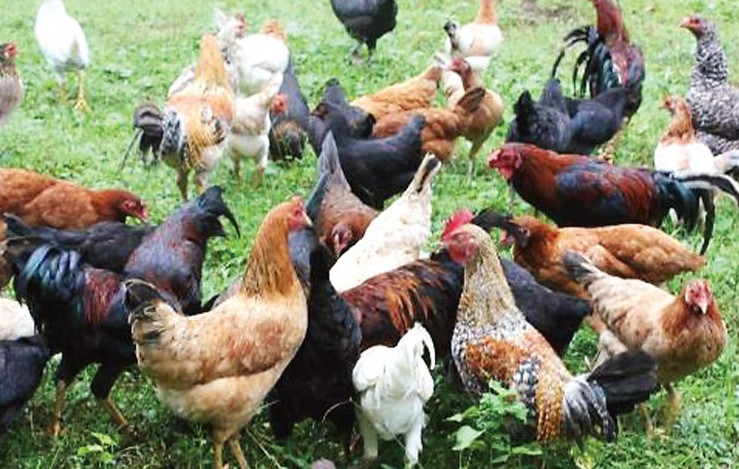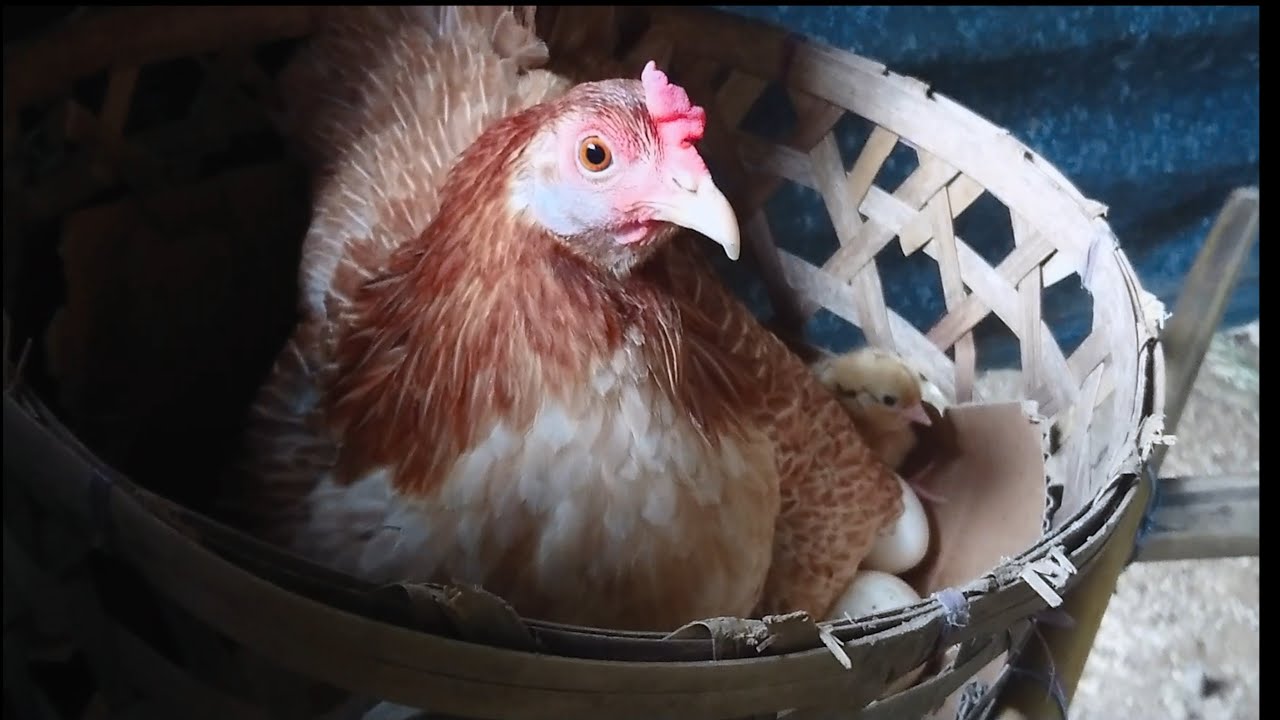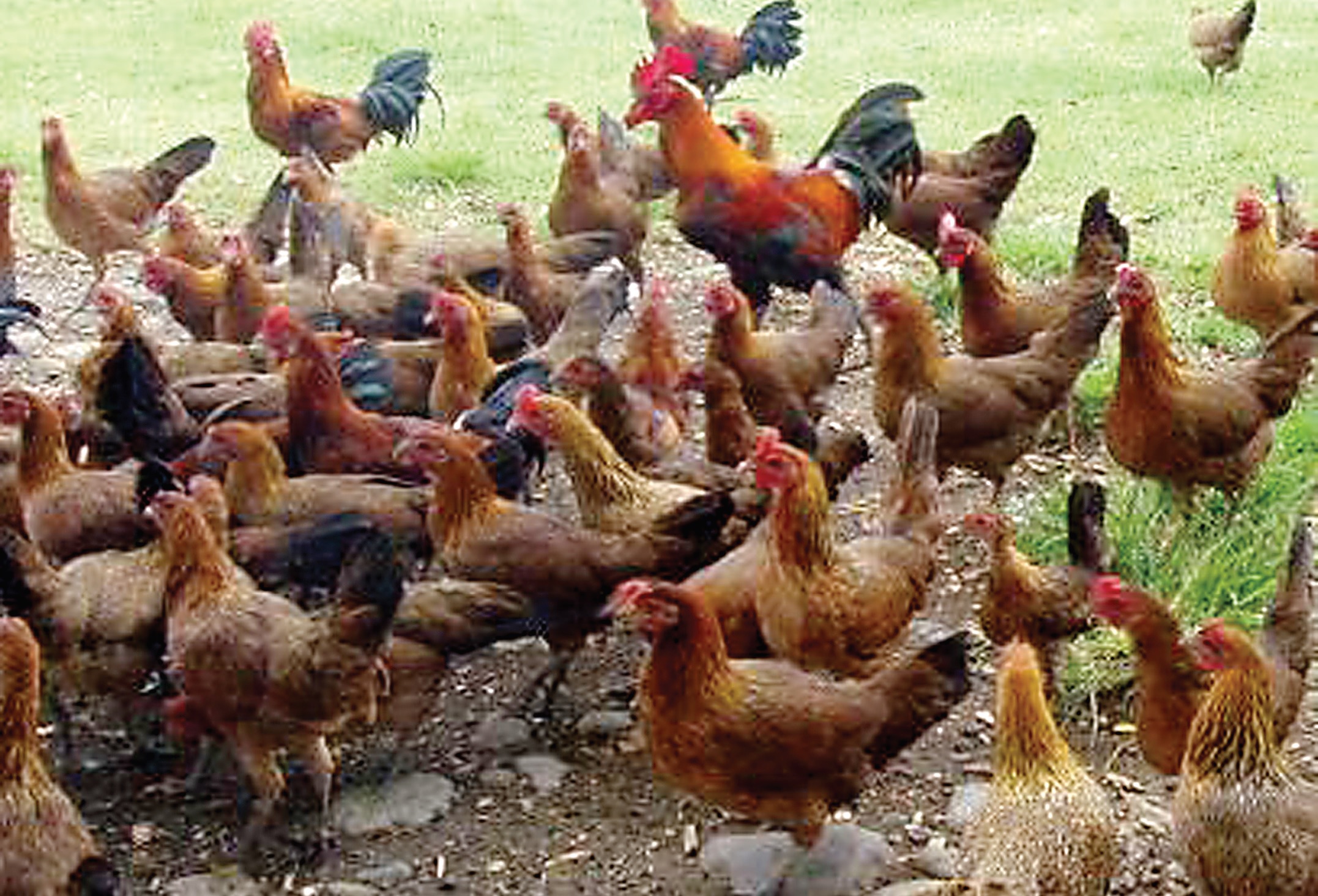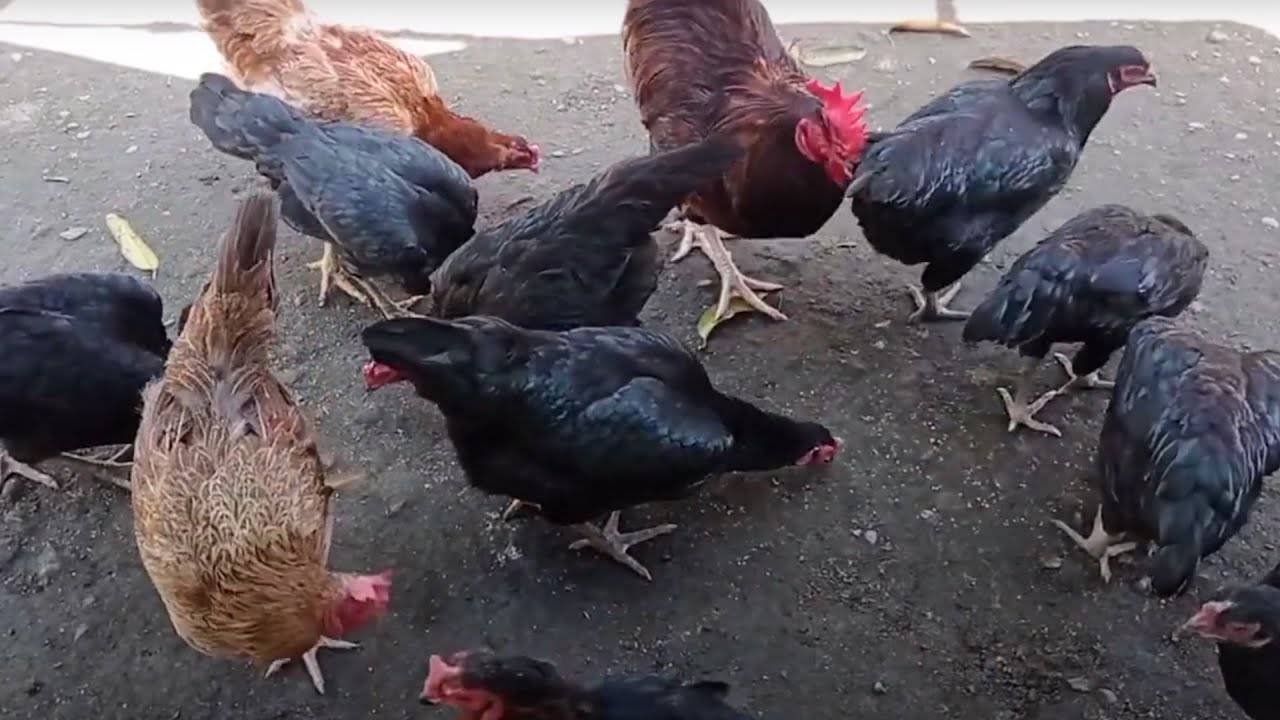We always talk about American heritage chicken breeds here at Putakputak.com but little did we know that the Philippines has a lot to offer. We may not call it Philippine heritage chicken but our native breeds are actually our own heritage breeds.
What is native chicken Philippines?
Before imported breeds arrived in the Philippines, we have Tagalog and Bisaya. These are the local terms for our native breeds. If you are in Luzon, you call it Tagalog, and if you are in the Visayas and the bigger part of Mindanao, you call it Bisaya. Both of them refer to the native chicken that we often see roaming around our rural neighborhoods.
The government and even the private sectors are doing their best to conserve and even populate these breeds. The West Visayas University (WVU) in Iloilo for instance is breeding Darag and distributing chicks to interested individuals and groups. The Department of Agriculture (DA) and Bureau of Animal Industry (BAI) also continue to distribute native chicken breeds to rural areas of the Philippines in an effort to uplift livelihood programs and also to conserve and promote our local breeds.
Lists of Philippine native chicken breeds
There are dozens of foreign and native chicken breeds in the Philippines today but regardless of whatever American breeds we have, the taste of our native chicken is still the best. Let’s take a look at the lists of our native heritage breeds. The following breeds are the most popular. There are other native breeds not included in this list.
1. Darag

Darag is arguably the most popular native chicken breed for backyard raisers in the Philippines.
Darag, a native chicken breed found in Iloilo, Panay, Negros, and Guimaras has captivated the taste buds of both locals and foreigners alike. Prominent yellowish-brown plumage for females and shiny red for males, black tail feathers, and grey shanks describe the Darag. Best known for its unique flavor, taste, and meat texture, it has become famous as an alternative enterprise for commercial chicken.
Researchers of the Food and Nutrition Research Institute of the Department of Science and Technology (FNRI-DOST) led by Ms. Ma. Elena G. Fernandez saw the need for science and technology (S&T) based information that has to be generated to enhance the production and utilization of the Philippine native chicken. The chemical basis of the chicken meat’s superiority in nutritional and sensory properties must be provided, Ms. Fernandez added.
The results of the study showed that Darag chicken meat, when cooked, contains less fat, is high in protein, is rich in potassium, and has more unsaturated fatty acids. The majority of the consumer-type panelists rated the Darag chicken meat, cooked as tinola, a “like very much” approval in terms of flavor and general acceptability.
For those who are health-conscious, lactating mothers, or those simply looking for a distinct taste in chicken, try Darag native chicken and find out why it is the pride of Western Visayas. Famous local Darag delicacies are tinola, litson manok, tinu-om, and chicken inasal.
Government researchers have paid special attention to the Darag from Panay. The Philippine Council for Agriculture, Aquatic and Natural Resources Research and Development (PCAARRD) has allocated funds for research to develop a package of technology that could improve productivity. And as reported by Dr. Synan Baguio, OIC of the Livestock Research Division of PCAARD, Darag has been purified after several years of breeding and selection.
The modern Darag is now more or less uniform in the color and pattern of its plumage, body conformation and size, predictability of growth, adaptability to the natural environment (resilience to extremes of climate and foraging behavior), and other traits that contribute to the predictability of performance. There is today a Darag chicken raisers’ association in Panay that could push the commercial production of the fowl to meet the big demand for its meat and eggs. Their production, however, is still short of the demand. This means there’s a very good business opportunity for investors big and small.
Research funded by PCAARRD had come up with a package of technology that is science-based, including judicious breeding techniques, hatchery systems, natural feeds, botanical dewormers, enhancement of the free-range area, and more.
2. Banaba

Banaba is an indigenous chicken found in the Quezon and Batangas provinces, the northern part of the Philippines. According to the latest findings, the Banaba shows promising characteristics in terms of egg production and growth.
The Banaba fowl is a straight-combed breed. Black-breasted with red-orange hackle feathers in roosters. Hens are wheaten in color, straight-combed. Black Tail feathers on both sexes. Straight-comb with bright red earlobes; can have white earlobes. Stands upright with slate-colored shanks. Plumage colors may vary.
One of the great advantages of native chicken breeds like Banaba over imported pure breeds and hybrids is that our native chickens are used to tropical climates. This is also the reason why they are stronger against diseases compared to imported breeds.
3. Bolinao

The Bolinao chickens are predominantly found in the province of Pangasinan hence it is named after the Bolinao town. The adult male has red plumage with black breast and tail feathers. The hackle feathers are bright orange. The feet range in color from slate to gray and have usually straight spurs. The earlobes are bright red. The female has a light brown plumage with black tail feathers and a yellowish-brown back. The earlobes are usually white and the feet are slightly slate. Both sexes have well-placed wings which are carried close to the body. Roosters are popularly raised for cockfighting.
Bolinao day-old chicks weigh about 26g. At 12 weeks, the males weigh about 862g while females weigh about 701g. The first egg is laid about 184 days old. The average egg weighs about 30g. The hed-day egg production at 40 weeks old is about 24.3% with eggs weighing an average of 41g. Percent fertility in semi-confinement is about 70%. Body weights at 40 weeks of age for males and females are 1.95kg and 1.57kg respectively. The rate of depletion during the laying period is about 6%.
Local government and other private sectors are giving an effort to populate this type of breed, especially in Northern Luzon.
The Mariano Marcos State University (MMSU) and the Bureau of Jail Management and Penology (BJMP) in this city have agreed to put up a demonstration project for Bolinao chicken production inside the compound so that inmates would learn how to raise this high-value bird both as recreation and livelihood activity.
The project is under the “Sustainable Production, Marketing and Utilization of Improved Bolinao Native Chicken in the Ilocos Region,” which is funded by the Department of Science and Technology — Philippine Council on Agriculture, Aquatic and Natural Resources Research and Development (DOST-PCAARRD).
As a whole, the Bolinao chicken project in the Ilocos region aims to help empower climate-resilient farmers and animal raisers in various rural communities by providing them with technologies and skills in raising this high-value native chicken for commercial production.
4. Camarines

Camarines chicken breed originated from Bicol, particularly in the Camarines area. The Camarines chicken is closely similar to Barred Plymouth Rock in color only it has a reddish barred plumage. Camarines is one of the tallest and largest native chicken breeds next to Paraoakan.
Although Camarines is bigger, taller, and heavier compared to other native chicken breeds, it is the least popular and one reason could be the rarity of its pure breed. Some groups in Bicol are trying to populate the pure Camarines breed to conserve their local heritage chicken breed.
5. Joloanon

A native of the Zamboanga Peninsula, Joloanon is always confused with Paraoakn due to its similar built and appearance but pure Joloanon has a totally different color which is seldom can be seen today outside the Zamboanga Peninsula.
Joloanon, which is also referred to by Ilonggos as “Jolo”, is a tall chicken breed with tricolor plumage. Its rooster is very popular among gamefowl breeders as they use it to cross with imported gamefowls. Like Paraoakan, there is not so much difference aside from color.
It is believed that Joloanon and Paraoakan came from the same source and the color only differs over time due to multiple crossbreeding. Others call this chicken Zampen (Zamboanga Peninsula).
6. Paraoakan

The Paraokan (or Parawakan) chicken originally comes from Malaysia and was introduced to the Philippines in the 14th century by Arab missionaries and Muslim traders. It is currently farmed mainly on the island of Palawan, but it can also be found in the provinces of Maguindanao and Lanao del Sur and on the islands of Basilan and Jolo (for this reason, the breed is also known locally as Jolo).
Compared to other native poultry breeds in the Philippines, the Paraokan chicken is the largest. It has long legs, a larger body, a bigger head than other local breeds, and an elongated neck.
Unfortunately, Paroakan chickens are farmed mainly for their use in local sports, especially cockfights, rather than as a food source. They are usually black, but can also have reddish feathers similar to Joloanon. Cocks can grow to 3-5 kg and usually, after 6 months since birth, they are already 1.2-1-3 kg. They have a much slower growth pace than commercial and industrial breeds. This slower growth means that they develop a stronger muscular structure.
These chickens were considered a valuable good by the families in the Mindanao region and their meat is found in many traditional recipes of the island of Palawan.
Frequently Asked Questions about Philippine Native Chickens
Is native chicken healthy?
Philippine native chicken is the healthiest chicken we can consume. It also has deep, delicious, and fresh flavors that have less cholesterol compared to commercial poultry. Poultry chickens are genetically bred to grow quickly and fast. But the downside is that they have a lot of fats inside them.
What is native chicken farming?
Native chickens are typically raised in the backyards of rural households. They are commonly grown in small numbers of up to about 24 hens for egg production. Some farmers raise native chickens for meat, barter, or sale as an additional source of income for the household.
What is the difference between native chicken and commercial chicken?
Darag meat contained 59.1% unsaturated fatty acids (USFA) and 40.8% saturated fatty acids (SFA) when cooked while commercial broiler meat contained 61.2% and 39% respectively. Based on the results, native chicken meat provided higher protein and lower fat in the diet compared with commercial broilers.
What is the importance of native chicken?
Native chicken plays a major role for the rural poor and marginalized section of the people with respect to their subsidiary income and also provides them with nutritious chicken egg and meat for their own consumption. The performance of native fowl can be improved by changes in husbandry, feeding, and better health cover.
Native chicken constitutes 46% of the total chicken population in the country, which is around 76 million heads. This local genetic resource provides livelihood in terms of additional income, food security, and the opportunity to convert farm wastes & by-products into high-value products (i.e. meat and eggs). Native chickens also provide socio-cultural services to rural communities.
What is upgraded native chicken?
Upgraded native chicken means the chicken is crossed with bigger imported breeds. The Bureau of Animal Industry (BAI) introduced this method as a means to upgrade local chicken by exchanging a local cockerel with a purebred one. Thus, all native cockerels in the flock are eliminated.
What are the characteristics of native chicken?
The Philippine Native Chicken are friendly chickens with a good nature. They are very good pets for children, but they can get aggressive when annoyed. Philippine Native Chicken are tough birds, resistant to illness, good at foraging and free-ranging, and typically docile, quiet, and friendly.
How much is native chicken in the Philippines?
Though over half of the country’s chickens hail from imported lineages selected for their superior growth and egg-laying capabilities, the Philippine Statistics Authority estimated in April 2019 that native chickens still account for 44% or 82.84 million of the 184.88 million chickens in the country. Depending on which part of the country you are living, native chicken meat costs from P180 to as high as P350. Free-range upgraded organic chicken sometimes can cost up to P800 per kilo, especially in luxury hotels.
What do you feed indigenous chickens?
To increase their weight and be able to lay more eggs, indigenous chickens need to be provided with supplementary feeding as they are allowed to scavenge for feed in the free-range system. Chicks also need protein-rich feeds such as balanced starter feeds or simple supplementary feeds such as omega fish or termites.
Is native chicken organic?
Most native chickens raised in the country are free-range and raised in backyards. They are free to roam and eat whatever they can find. Native chickens and their upgrades, whether raised under a scavenge-based system or free-range system, can very well be regarded as “organically produced.”
How do you raise native chickens?
Native chickens should be provided with ample housing structures where they can roost during the night, find shelter during rainy weather, and build nests when they are of laying age. Provide adequate range type housing for growers and breeders with 1-2 square meters per bird. They must have enough open space to roam around during the daytime and must be fed with corn, grated coconut, and other organic foods.
Are you allowed to keep chickens in a residential area Philippines?
Chickens, especially roosters are generally not allowed in urban residential areas like subdivisions. Unless with the consent of the homeowners association, a person must not keep or allow to be kept any roosters on any land in an urban residential area. Most HOAs imposed this restriction in localities in response to feedback received from the community regarding noise nuisance caused by the crowing of roosters.
Is native chicken good for high cholesterol?
The cholesterol content of uncooked freshly dressed and frozen native chicken meat ranged from 96 mg to 105 mg/100 g and 141 mg/100 g when cooked. This amount is within the less than 300 mg/day recommendation of the FAO/WHO of the “reasonable restriction cholesterol intake.”
Why do native chickens tend to have darker meat color, especially on the leg muscles than broilers?
It is well documented that the darker color of leg/thigh meat is due to the larger amount of myoglobin and haem pigments, as well as a higher pH when compared to breast meat.
Is Rhode Island Red a native chicken?
The Rhode Island Red is a domestic American breed chicken. It was introduced in the late nineteenth century in Massachusetts and Rhode Island by cross-breeding birds of Oriental origin, such as the Malay with brown Leghorn birds from Italy. RIR, as we call it, is a native American chicken breed and not a Philippine native chicken.
Can a native chicken lay eggs without a rooster?
Yes! You don’t need a rooster for your chickens to lay eggs. Your chickens will lay an egg about every 25 hours with or without a rooster. However, although hens have the ability to lay eggs without a rooster, a rooster will be needed to fertilize the hens’ eggs.
Do you know about these chickens? There might be other chicken native breeds but so far, this list is the one recorded in books so far.
See Also: